You Won’t Believe How Many Hand-Drawn Frames of Animation Went into Cuphead
Staff – July 10, 2019 at 10:20 AM
50,000. If you’ve ever wondered how many frames of animation goes into a masterpiece like Studio MDHR’s Cuphead, you’ve got your answer. From its elaborate, scenic backdrops to its wonderfully expressive characters, Cuphead contains 50,000 frames of painstakingly hand-drawn and -inked animation. It’s a number so impressive that it even garnered the studio a Guinness World Record for “Most Hand-Drawn Frames of Animation in a Video Game Production.”
With a new DLC, The Delicious Last Course, on the way, many players must surely wonder: How can Studio MDHR pull off another masterpiece?
One answer is that the studio has been learning. All in all, the process of developing Cuphead wasn’t simply arduous but highly educational for the studio, as well. “When we were building Cuphead, we were also learning a massive amount about game development at the same time,” Chad Moldenhauer said. “As any independent studio will likely tell you, there’s no ‘one true way’ of making games, and many of the most important lessons often come in retrospect.”
With The Delicious Last Course’s release somewhere on the horizon, the Moldenhauer brothers are entering the development process with an even deeper understanding of how to make what they want to make. “While we’ve largely maintained the same art and engineering pipelines as we’ve shifted into development on The Delicious Last Course, we’ve made big strides in shared communication tools, regular production syncs, and overall development planning,” Chad Moldenhauer said. “The end result is a process that feels more clear and visible to one another, as well as more efficient!”
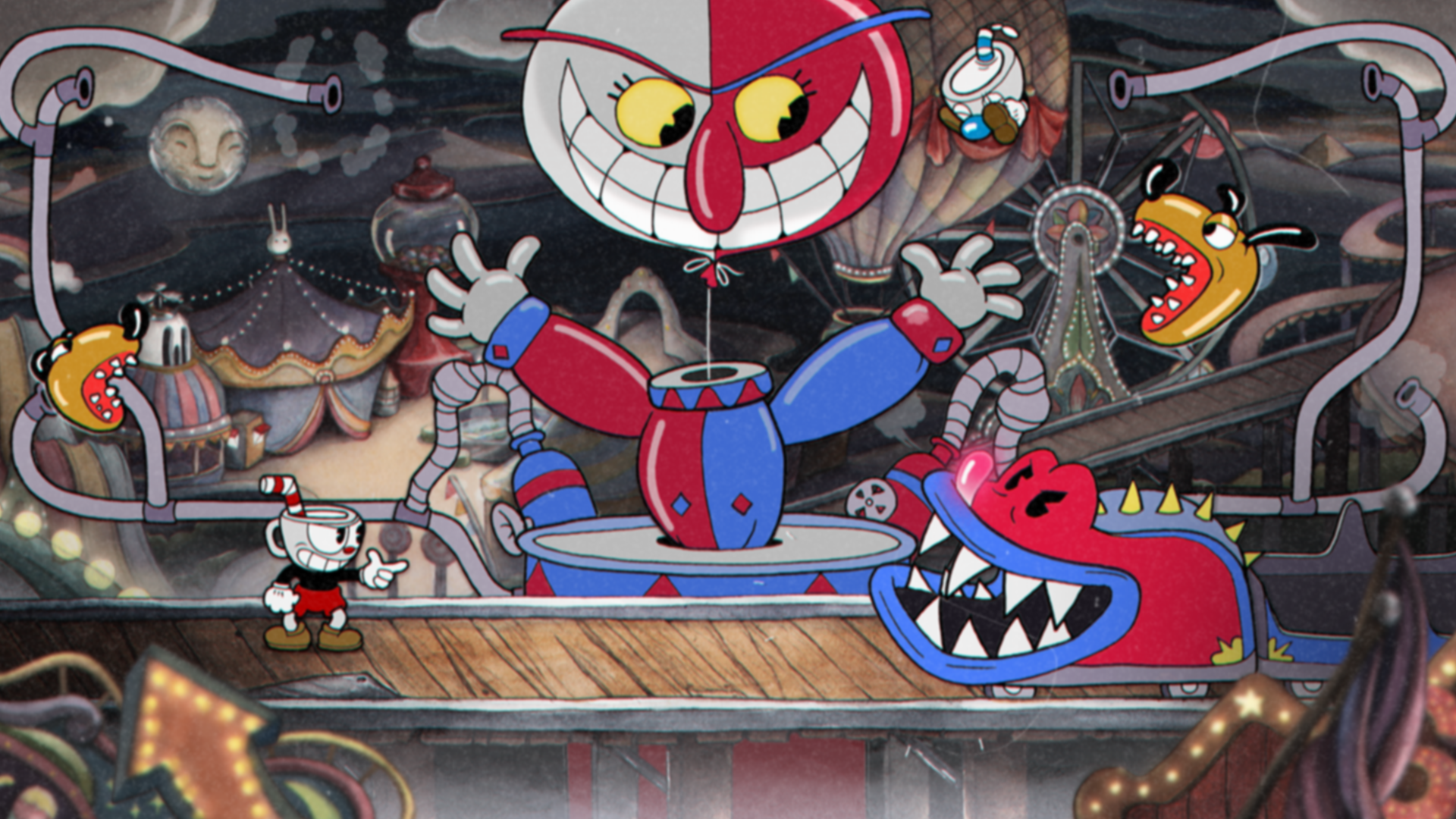
Cuphead itself isn’t merely unique in its status as a Guinness World Record recipient, nor is it unique for its ‘30s cartoon art style or its notoriously exacting difficulty. It’s unique in that it marries the visual language of both video games and old-school animation to create something entirely new, paying loving homage to a wide, esoteric range of influences all at once. Many of these influences were plucked from the shared childhood of Chad & Jared Moldenhauer, the fraternal wonder duo who serve as co-directors at Studio MDHR.
While Cuphead wears its influences on its sleeve, it’s difficult to identify a single main source of inspiration — there were just so many. “It’s hard to pin down one formative cartoon influence for Cuphead, as the game’s aesthetic is very much a product of our love for the wide range of classics spanning the ‘20s and ‘30s,” Chad Moldenhauer said. He described that the common denominator across Cuphead and its cartoon influences is “a tonal affinity with the silly but off-kilter,” including early works by Disney, Ub Iwerks, and the Fleischer brothers.
Additionally, if you notice something in Cuphead that might be a reference to another game, you’re probably right. “If you look carefully as you play Cuphead, you will notice that the game is a love letter to many retro games, with very subtle references to hundreds of titles hidden in the backgrounds, animations, and bosses,” Jared Moldenhauer said.
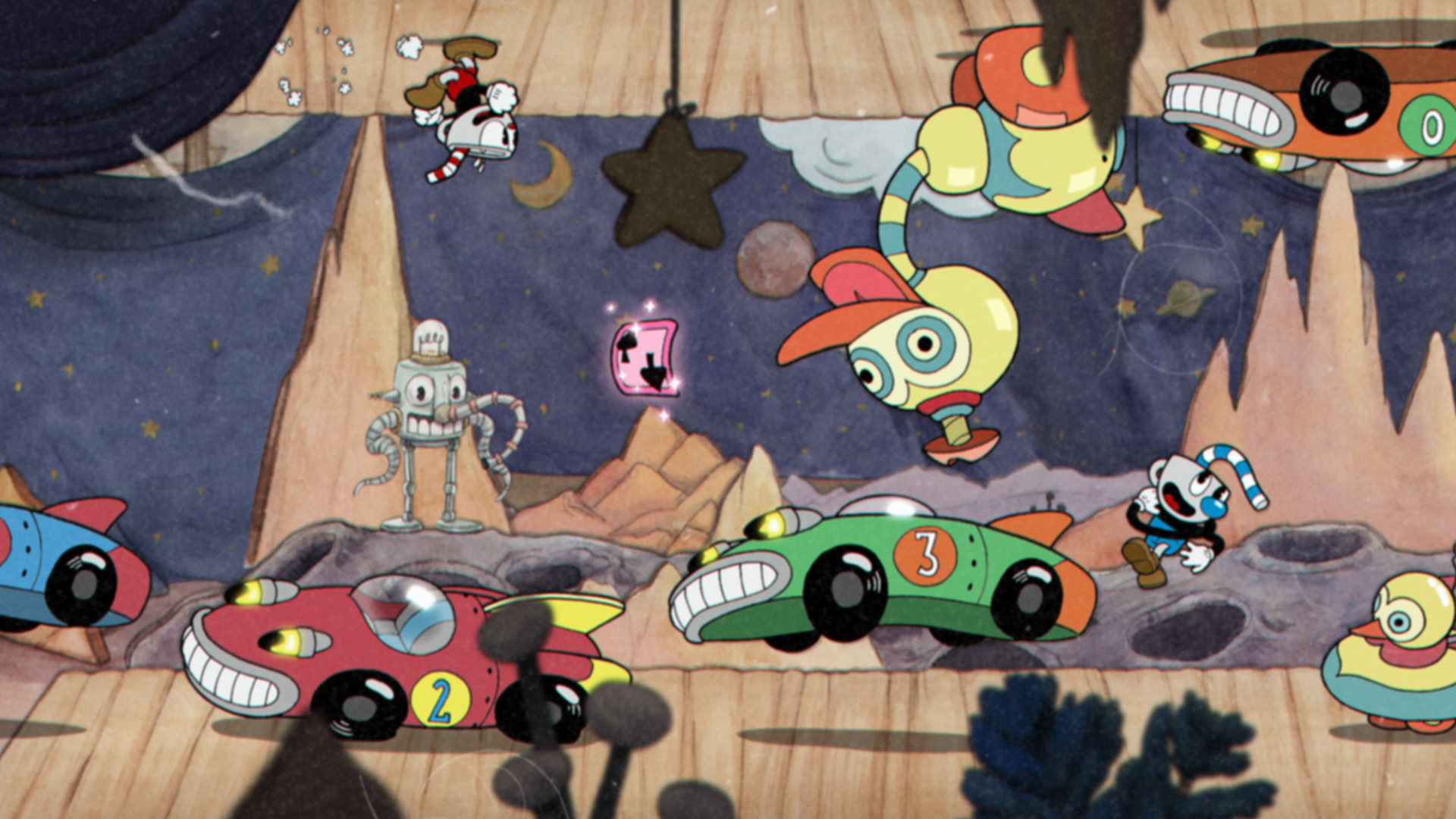
From Street Fighter 3 to Mega Man, Cuphead also collects many of the mechanical ideas and game design concepts that most intrigued the Moldenhauer brothers across an entire lifetime of playing games together, especially titles from the 8- and 16-bit eras. They hoped Cuphead would elicit similar sentimental feelings in its players, as well. “Nostalgia was ultimately something we really wanted to evoke very strongly,” Chad Moldenhauer said.
In lesser hands, that might’ve felt derivative, but Cuphead breaks the mold by combining these references to deliver an experience that feels unlike any other. Yes, you might have played games that are similar in mechanics, and sure, you might have watched cartoons that are similar in aesthetic. Yet few other pieces of media can replicate the feeling of playing Cuphead, which is about absorbing the overwhelming affection Studio MDHR has for its influences as much as it is about dying to Cala Maria, the Medusa-mermaid hybrid, for the hundredth time in a single sitting.
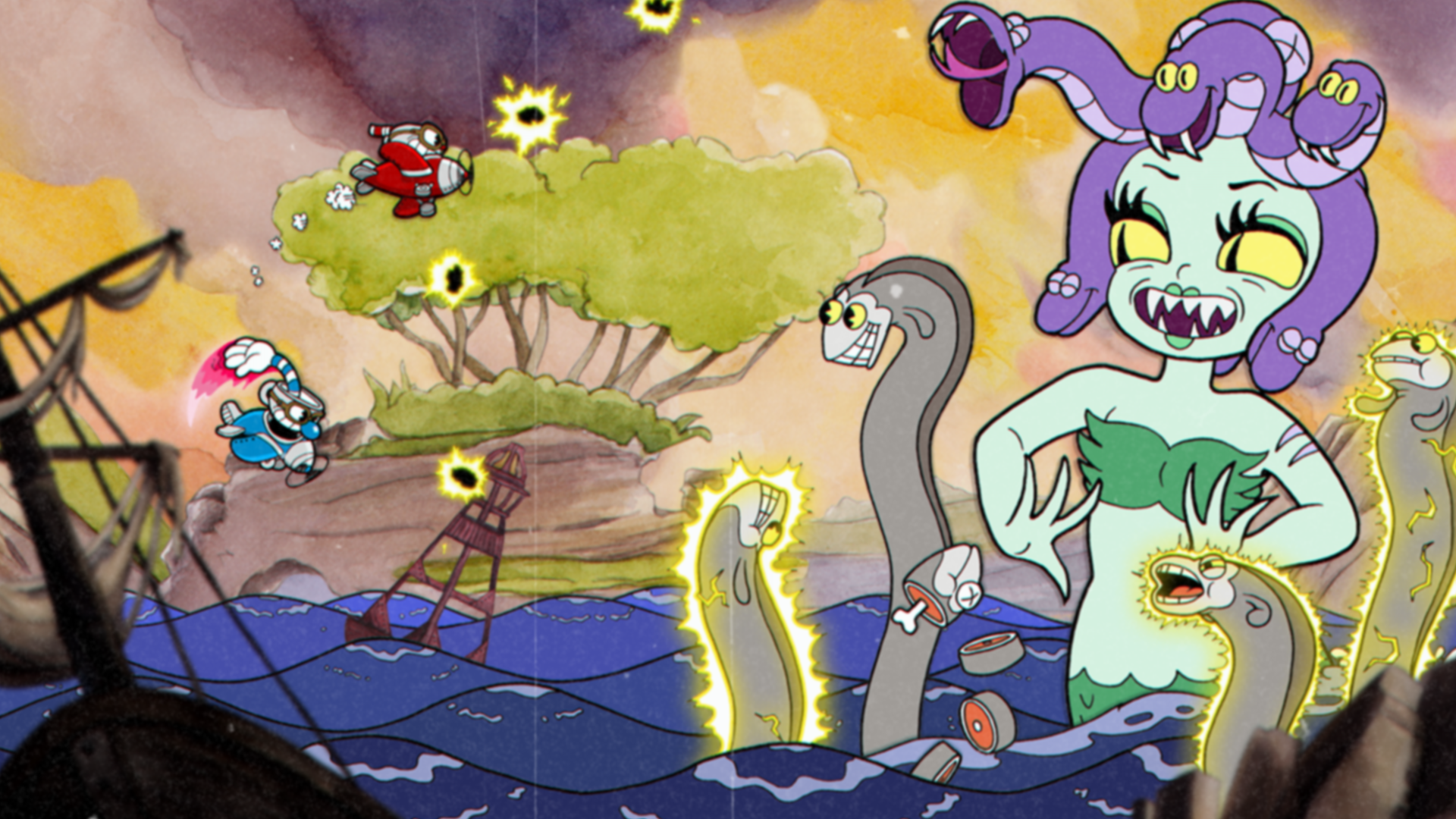
As you might guess, making such an impressive feat of animation and video game production takes a lot of work. First, each individual frame is hand-drawn using pencils on 12- or 16-field animation paper. Once a visual idea becomes more concrete, the frame gets inked by hand onto a brand-new sheet of paper to make it look clean.
Next, the frame gets colored, which is the only digital step of the entire animation process. Going digital for coloring was a decision the studio made after much deliberation and testing. Ultimately, they found that coloring frames by hand had little effect on the final result. “Even with our love of natural materials, we made the important decision to handle coloring digitally and save years of development time!” Chad Moldenhauer explained.
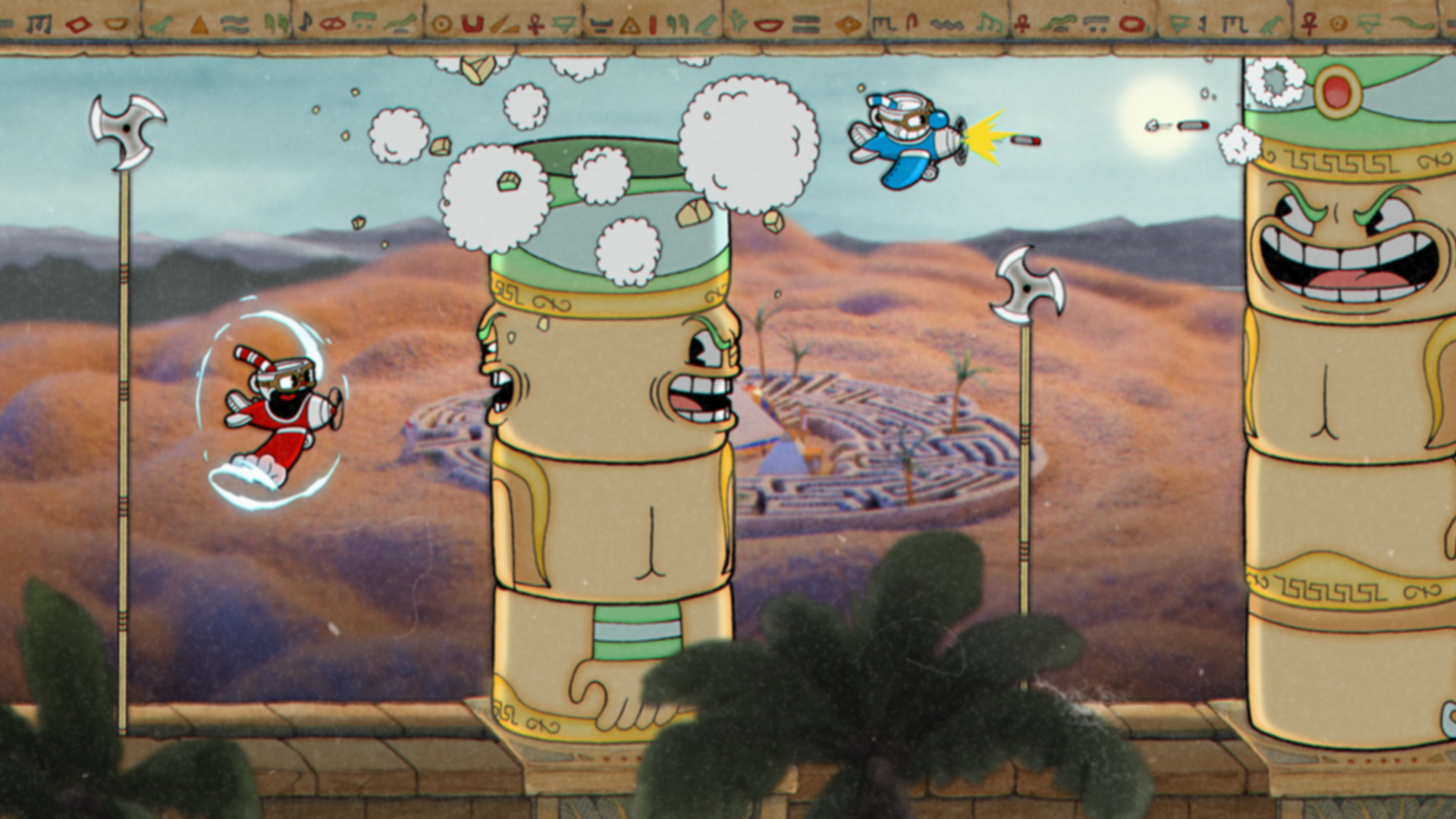
Even then, the studio went through laborious lengths to mimic the human imperfections embedded into the classic ‘20s and ‘30s animation style. Film grain, emulated cel shadows, and even scratches scanned from actual film stock were littered across the game to grant it a living, human feel. The amount of labor that went into the animation is apparent even from watching just a second of gameplay footage; like if Hieronymus Bosch envisioned a Saturday morning cartoon, every moment is filled to the brim with life and movement.
So, how exactly are those 50,000 Guinness World Record-worthy frames of animation divided? For starters, a single animation might take between 32-100 frames, depending on the complexity of the subject. Boss characters might contain anything between 800-1400 frames depending on how complex the stage might be, while the lovable player characters Cuphead and Mugman each used up roughly 1200 frames of animation.

The time required to complete each boss level varied depending on quite a large number of variables. The design process — developing ideas and patterns for a level — would take between one and four months, while testing the ideas with crude, “greybox” visuals would take an additional two months.
Once the level was deemed fun enough to play, it would be animated, which would take between two and four months depending on the rigorousness of the art process. “Each boss was quite a herculean undertaking, but the end result was always a joy to see and play!” Chad Moldenhauer said.
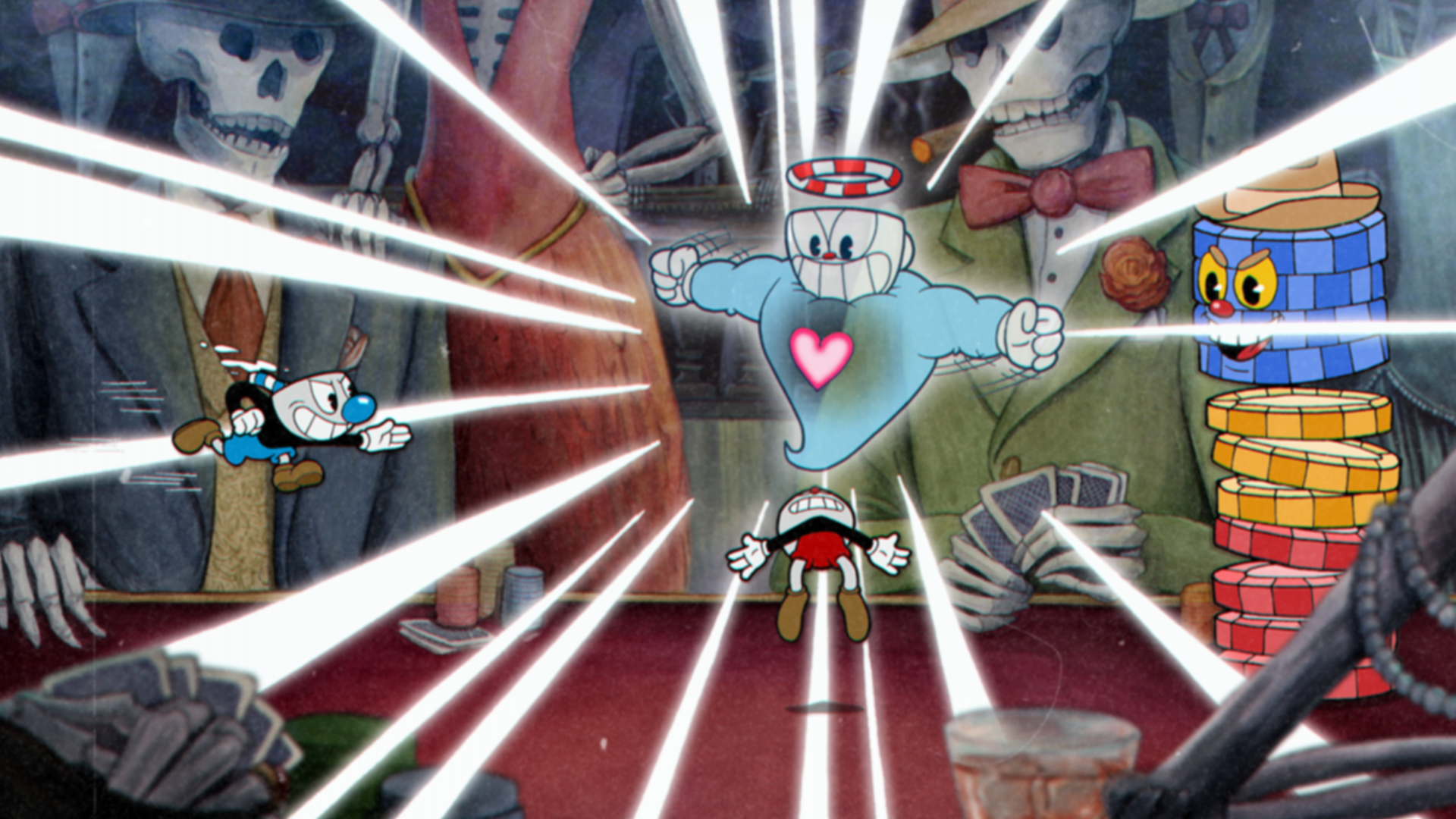
Even the core mechanics of the game underwent several iterations. “It really does all flow back to [Nintendo legend and creator of Mario] Shigeru Miyamoto-inspired principles for us. That is: Player feel is the absolute key!” Jared Moldenhauer said.
He explained that each and every player action was fine-tuned to possess a secondary depth and utility; the parry mechanic, for instance, is a great example of this, in that it’s used to both cancel out enemy projectiles and provide the player with extra mobility. “The overall goal was to make something simple to pick up and play that still intuitively maximized player potential as they progressed through the game,” Jared Moldenhauer said.
With The Delicious Last Course slated to release sometime the following year, Studio MDHR is hard at work on another gem. For Cuphead fans, this is nothing but good news: A brawl is surely brewing!
Cuphead is currently available for PC.
Recommended specs:
- OS: Windows® 7 (64-bit)
- CPU: Intel® Core™ 2 Duo E8400
- RAM: 3GB of system memory
- Graphics card: NVIDIA® GeForce® 9600 GT or AMD® Radeon™ HD 3870
- Storage: 4GB of available space
- DirectX: Version 11

